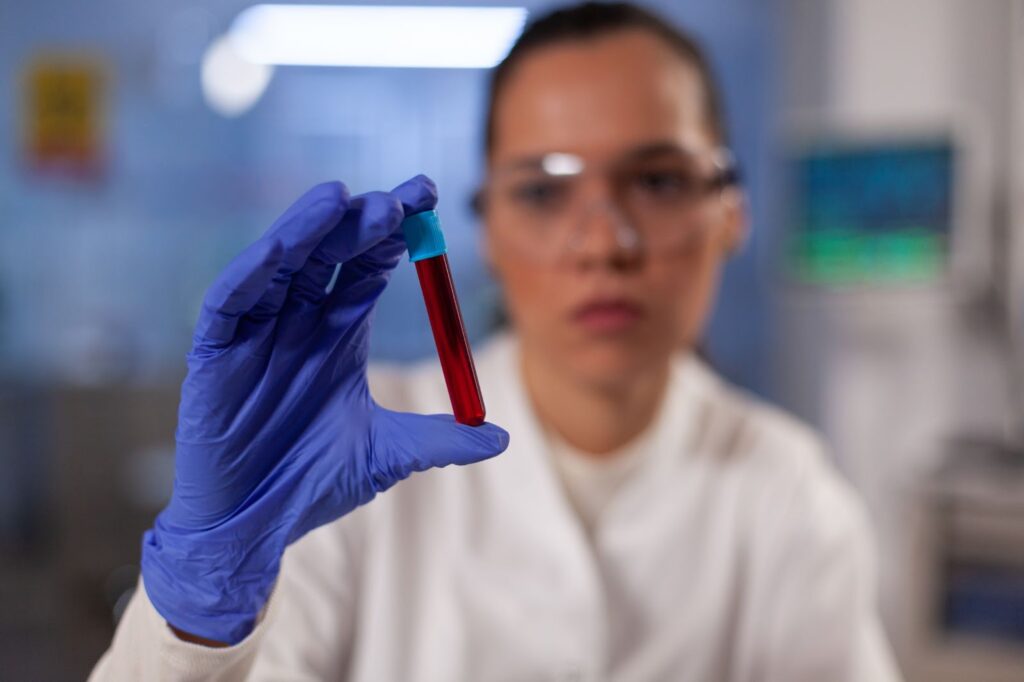
Unlocking the Significance of the PIVKA Test
Liver ailments stand as a major health issue worldwide, encompassing severe conditions such as cirrhosis and hepatocellular carcinoma (HCC), which jeopardize the health of affected individuals. The importance of promptly and precisely identifying liver maladies cannot be overstated for the successful care and therapy of these diseases. In this context, the Protein Induced by Vitamin K Absence or Antagonist-II (PIVKA-II) test has gained prominence as an especially beneficial diagnostic method.
Understanding the PIVKA Test: Unveiling the Insights
Delving into the intricate world of medical diagnostics, the PIVKA test emerges as a pivotal tool, illuminating the presence of a crucial protein variant: Protein Induced by Vitamin K Absence or Antagonist-II (PIVKA-II). This blood assay, also dubbed the PIVKA-II test, serves as a sentinel, flagging heightened levels of this anomalous prothrombin derivative. Let’s embark on a journey to unravel the depths of this test and its implications.
What is PIVKA-II?
PIVKA-II, an aberrant rendition of prothrombin, unfurls a narrative of liver intricacies. Originating from the liver’s precincts, prothrombin normally assumes the mantle of a key player in the blood’s coagulation cascade. Yet, when the liver’s functionality wanes, as in cases of liver cirrhosis or Hepatocellular Carcinoma (HCC), prothrombin’s metamorphosis into PIVKA-II takes center stage. This transition heralds an unsettling terrain, where abnormal prothrombin molecules proliferate within the bloodstream, hinting at underlying hepatic perturbations.
Understanding the Importance of the PIVKA Test in Liver Disease Diagnosis
The PIVKA test stands as a pivotal tool in the arsenal of medical professionals, particularly in the realm of liver disease diagnosis. This test holds profound significance due to its unique capability to not only diagnose but also monitor liver conditions, with a special focus on Hepatocellular Carcinoma (HCC). Here’s why the PIVKA test is crucial:
- Early Detection Potential: Unlike conventional tumor markers like alpha-fetoprotein (AFP), the PIVKA-II levels exhibit a remarkable tendency to escalate even during the nascent stages of HCC. This characteristic is invaluable as it facilitates the detection of tumors when they are still minute and might not be discernible through imaging studies alone. Early detection significantly enhances the chances of successful treatment outcomes;
- Monitoring Progression: The PIVKA test isn’t just about diagnosis; it also serves as a vigilant monitor of disease progression. By tracking the levels of PIVKA-II over time, healthcare providers can gauge the efficacy of treatment modalities, assess tumor response, and make informed decisions regarding further interventions;
- Complementing Imaging Studies: While imaging techniques such as ultrasound, CT scans, and MRIs are indispensable in liver disease diagnosis, they may not always provide a comprehensive picture, especially in the early stages. Here’s where the PIVKA test shines by offering supplementary information that can corroborate or refine the findings of imaging studies, enhancing diagnostic accuracy;
- Prognostic Value: Elevated PIVKA-II levels are not only indicative of the presence of HCC but also carry prognostic significance. They can offer insights into the aggressiveness of the tumor, prognosis of the disease, and likelihood of recurrence post-treatment. This prognostic information is vital for tailoring personalized treatment plans and optimizing patient care;
- Guiding Treatment Decisions: Armed with the data gleaned from PIVKA tests, healthcare providers can make well-informed decisions regarding the most appropriate treatment modalities for individual patients. Whether it’s surgery, chemotherapy, radiotherapy, or targeted therapies, the insights provided by PIVKA testing aid in tailoring treatments that are both effective and minimally invasive.
Performing the PIVKA Test: A Step-by-Step Guide
The PIVKA test, short for Protein Induced by Vitamin K Absence or Antagonist-II, serves as a pivotal tool in diagnosing liver diseases, particularly Hepatocellular Carcinoma (HCC). Here’s a detailed breakdown of how this crucial test is performed:
- Patient Preparation:
- Before the test, patients may be advised to fast for a certain period;
- Inform the healthcare provider about any medications or supplements the patient is taking, as some substances might interfere with the test results.
- Blood Sample Collection:
- The procedure typically takes place in a clinical laboratory or a hospital setting;
- A trained healthcare provider will select a suitable vein, usually in the arm, and cleanse the area with an antiseptic solution to minimize the risk of infection;
- Using a sterile needle, the provider will draw a blood sample from the vein.
- Sample Processing:
- The collected blood sample is then transferred into a specialized tube or vial designed for blood analysis;
- To maintain sample integrity, it is properly labeled with patient identification information and other relevant details.
- Transport to Laboratory:
- Once collected, the blood sample is promptly sent to the laboratory for analysis;
- Proper handling and transportation protocols are followed to ensure the accuracy of results.
- Laboratory Analysis:
- In the laboratory, the blood sample undergoes a series of tests to measure the levels of PIVKA-II;
- Advanced analytical techniques are employed to precisely quantify the protein levels.
- Result Availability:
- Depending on the laboratory’s workload and testing protocols, results are typically available within a few days;
- Patients may receive their results through their healthcare provider or an online patient portal, depending on the healthcare facility’s practices.
Interpreting PIVKA Test Results: Unraveling the Clues
Understanding the implications of PIVKA test results is crucial for accurate diagnosis and treatment planning. Here’s a comprehensive guide to interpreting these results effectively:
- Consideration of Clinical Context:
- The interpretation of PIVKA test results should always take into account the patient’s medical history, symptoms, and overall clinical presentation;
- A holistic approach, combining laboratory findings with other diagnostic tests and imaging studies, is essential for accurate diagnosis.
- Elevated PIVKA-II Levels:
- Elevated levels of PIVKA-II alone do not provide a definitive diagnosis of HCC but may signal an increased risk of the disease;
- Other liver conditions, such as cirrhosis or viral hepatitis, can also result in elevated PIVKA-II levels.
- Confirmation with Imaging Studies:
- To confirm the presence of liver tumors, additional imaging studies are often recommended;
- Common imaging modalities used include ultrasound, computed tomography (CT), and magnetic resonance imaging (MRI);
- These imaging techniques provide detailed visualizations of the liver and help assess the extent and characteristics of any detected tumors.
- Follow-up and Monitoring:
- In cases where elevated PIVKA-II levels are detected, close monitoring and follow-up assessments are essential;
- Regular surveillance with imaging studies and periodic retesting of PIVKA levels may be necessary to track disease progression and treatment response.
- Multidisciplinary Approach:
- The management of liver diseases, particularly HCC, often requires a multidisciplinary team approach involving hepatologists, oncologists, radiologists, and surgeons;
- Collaboration among specialists ensures comprehensive evaluation, personalized treatment plans, and optimal patient outcomes.
Exploring the Boundaries: Understanding PIVKA Test Limitations and Considerations
Unveiling the Intricacies: Beyond the Surface of PIVKA Testing
When delving into the realm of liver health assessment, the PIVKA test emerges as a beacon, illuminating potential paths toward diagnosis and monitoring. Yet, amidst its utility lies a nuanced landscape of limitations and considerations, necessitating a deeper understanding for effective clinical interpretation.

- Diverse Elevation Causes: Elevated PIVKA-II levels extend their reach beyond the confines of Hepatocellular Carcinoma (HCC). Conditions such as liver cirrhosis, hepatitis, and even vitamin K deficiency can stir the biomarker’s levels, potentially clouding diagnostic clarity;
- Comprehensive Evaluation Imperative: Embracing a holistic approach becomes imperative in the face of PIVKA testing. Beyond the singular reliance on PIVKA results, clinicians must orchestrate a symphony of clinical assessments, imaging studies, and diverse laboratory tests to navigate the intricate web of liver health with precision;
- Diagnostic Precision through Collaboration: Collaboration emerges as a cornerstone in the quest for diagnostic accuracy. The synergy between the insights gleaned from PIVKA testing and the broader spectrum of diagnostic modalities empowers clinicians to weave a comprehensive narrative of the patient’s liver health, enabling informed decision-making.
Navigating the Path Forward: Recommendations and Insights
- Holistic Assessment Framework: Encourage clinicians to adopt a comprehensive framework encompassing PIVKA testing alongside clinical, imaging, and laboratory assessments to unravel the multifaceted nature of liver health;
- Vigilance in Differential Diagnosis: Advocate for heightened vigilance in discerning the underlying etiology behind elevated PIVKA levels, emphasizing the need to explore beyond HCC to encompass a spectrum of liver diseases and deficiencies;
- Interdisciplinary Collaboration: Foster a culture of interdisciplinary collaboration, where hepatologists, radiologists, pathologists, and other specialists synergize their expertise to decode the intricacies of liver health, thereby enhancing diagnostic precision and patient care outcomes.
Conclusion
To sum up, the PIVKA examination stands out as a critical instrument for evaluating liver wellness, especially when it comes to identifying hepatocellular carcinoma. Through the identification of heightened PIVKA-II levels, medical practitioners are equipped to pinpoint individuals susceptible to HCC, paving the way for prompt measures that enhance patient prognosis. Nonetheless, the significance of integrating PIVKA test outcomes with additional clinical and diagnostic insights cannot be overstated, as this holistic approach is crucial for the precise diagnosis and management of liver conditions. As research in this domain progresses, we anticipate advancements that will refine the early detection and treatment strategies for liver diseases, offering significant benefits to patients across the globe.
